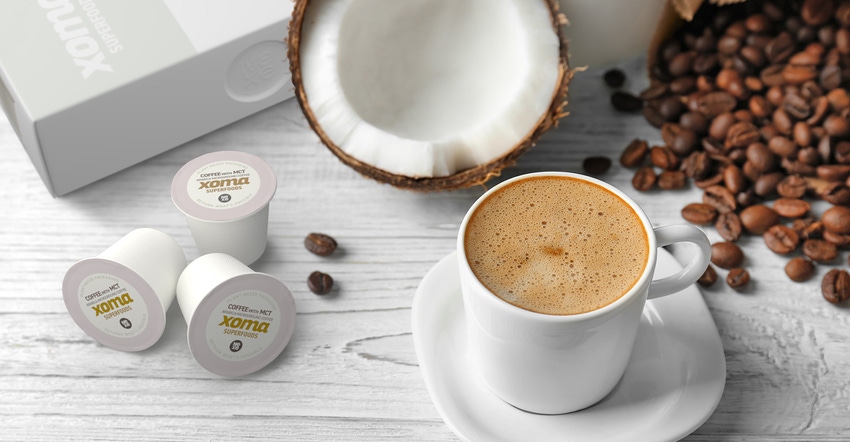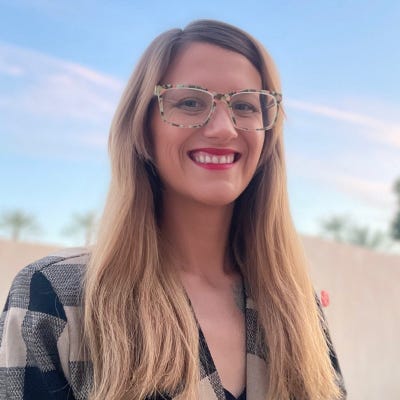Inside NEXE's Plant-Based Compostable Coffee Pod

Single-serve coffee pods have long been an impediment in waste reduction efforts across the globe as well as a large contributor to plastic waste.
While convenient for consumers, the sheer number of plastic pods that wind up in landfills each year is estimated to be upwards of 40 billion. The most recent figures available indicate that Keurig Green Mountain sold 13.2 billion K-cups in 2018, and that's just one brand.
Vancouver-based NEXE Innovations has developed a single-serve, plant-based pod that is fully compostable in landfills in just 35 days. The company has raised $35 million to date from equity and government funding to develop solutions that meet the growing demand for environmentally friendly and sustainable products.
In a Q&A with Waste360, Chief Scientific Officer Zac Hudson explains the company's 3D design process and how it assisted in developing and testing a truly compostable single-serve pod.
Waste360: Please tell me about the company and why coffee pods were chosen.
Zac Hudson: About five years ago, our CEO and Co-Founder Darren Footz, who was previously one of the co-founders of Granville Island Coffee Company and comes from the coffee business, took a look at the growth of a single-serve beverage pod market and realized that this is an environmental disaster. Currently more than 41 billion of these plastic pods are discarded to landfills every year. If you stack these on end, it's enough to wrap around the Earth 11 times. It's actually a terrifying statistic. Darren made it his mission to come up with something better and founded NEXE. Over the past five years, we've been working with engineering plant-based materials to give you the same kind of old cup of coffee, flavor and shelf life that you'd expect from a traditional plastic pod.
Waste360: What was the design process to make these coffee pods compostable?
Hudson: The actual sort of process that we go through is to start with a product we identify - in this case, coffee. Then our engineering and design team uses computer-assisted design (CAD) modeling to come up with the bioplastic parts we want to make. We combine this with our expertise in polymer science. That's where I come in. I'm a polymer chemist by training to formulate plant-based materials that will give us the right properties we want. For a coffee pod, you want something that is heat resistant. And you want something that can resist brewing under water pressure, for example. After that, we use a lot of 3D printing. 3D printing has just revolutionized our manufacturing and prototyping process. With traditional plastics manufacturing, you're making these large stainless steel molds to inject your plastic into, and it takes weeks to months every time you want to make a small change. With 3D printing, we can rapidly prototype every, let's say, two days can change the dimensions of a part by a few hundred microns or so on. That gets us to our prototype. And then you're asking about composting. So we've been testing our pods, actually with the municipal composting infrastructure of Greater Vancouver. We're actually doing this in an operational environment. And we do testing to the kind of international or European or STM standards for compostability, which are all basically the same. And we've shown that our pods break down in as little as 35 days.
Waste360: Tell me more about how 3D printing assisted in the design and manufacturing process.
Hudson: 3D printing really serves to accelerate the prototyping pipeline by allowing you to make one prototype without having to build a mold. One of the great advantages of what we're doing is that the bio plastics we use are primarily based on polylactic acid or PLA. And PLA is one of the most common filaments for 3D printers that hobbyists use at their house. So, if you were to buy your own 3D printer and buy some filament to start printing whatever you want, chances are that you would do that with polylactic acid. So that's amazing for a bioplastics company, because their printers are designed specifically for bioplastic. In terms of our design process, where it really helps us is to, like I said, shorten that cycle. I can go on my computer and take the prototype we have for a coffee pod and say maybe we can get a little bit more volume in there. Let's change that angle, make it a little bit wider and hit print. Two hours later, we have a prototype. And we didn't have to do any CNC milling. We didn't have to call up a supplier for a mold to get something made out of steel or aluminum. If the next day I say it doesn't fit in the pot anymore or it doesn't fit in the brewer, let's change it back. Two hours later, I have another prototype. So it's really accelerated manufacturing for us.
Waste360: How do consumers know they are truly compostable?
Hudson: Bioplastics right now is very confusing space for consumers because there's a lot of greenwashing which means that someone will say something is compostable, and it's not or someone will claim something breaks down completely, but it actually releases a lot of microplastics. Our marketing efforts do their best to make clear that our pods are fully compostable and break down completely to non-toxic byproducts and will do so in most common municipal composting facilities. That's featured a lot in our messaging. One of the most interesting things about this business is that stirring up demand for the product has really not been a bottleneck for us ever. Right now, we're in the process of ramping up manufacturing. But in terms of marketing and interest, I mean, if we had 200 million pods on the floor, we would sell them all right now. Coffee consumers are sustainability minded by nature. They've been buying fair trade coffee, organic coffee for years. And I guess I'll just add, that there are a number of brands, particularly our teas and brands that have avoided the single-serve format, because they don't like the plastic. There are a number of potential large customers for us who actually aren't selling any single-serve pods right now that that view our offering as a potential solution.
Waste360: Where do you see the sustainable packaging movement going in the future?
Hudson: This movement in sustainable packaging is not going to slow down particularly because I think the regulatory pressure is not going to stop. We've seen in Canada, Vancouver, specifically, new laws coming into place, banning different types of single-use plastics. The European Union is moving very aggressively to try to reduce the amount of single-use plastics going into landfills and oceans, and so on. So, I think consumers are demanding it and governments are taking steps to put pressure on that. Where I think this is headed is that you're going to see more products made from sustainable materials. And also you're going to see, I hope, clear regulations and guidelines for consumers to tell them how to handle them when they're when they're finished using the product.
Waste360: What's next for Nexe Innovations?
Hudson: By the end of 2021, we should have capacity and house to manufacture up to 220 million pods per year. That's based on our funding capacity for machinery. Every single one of those, if composted, breaks down completely into carbon dioxide, water and organic biomass. That would be a pod displaced every year. The intention would be to continue to scale into the billions of pods.
About the Author(s)
You May Also Like




